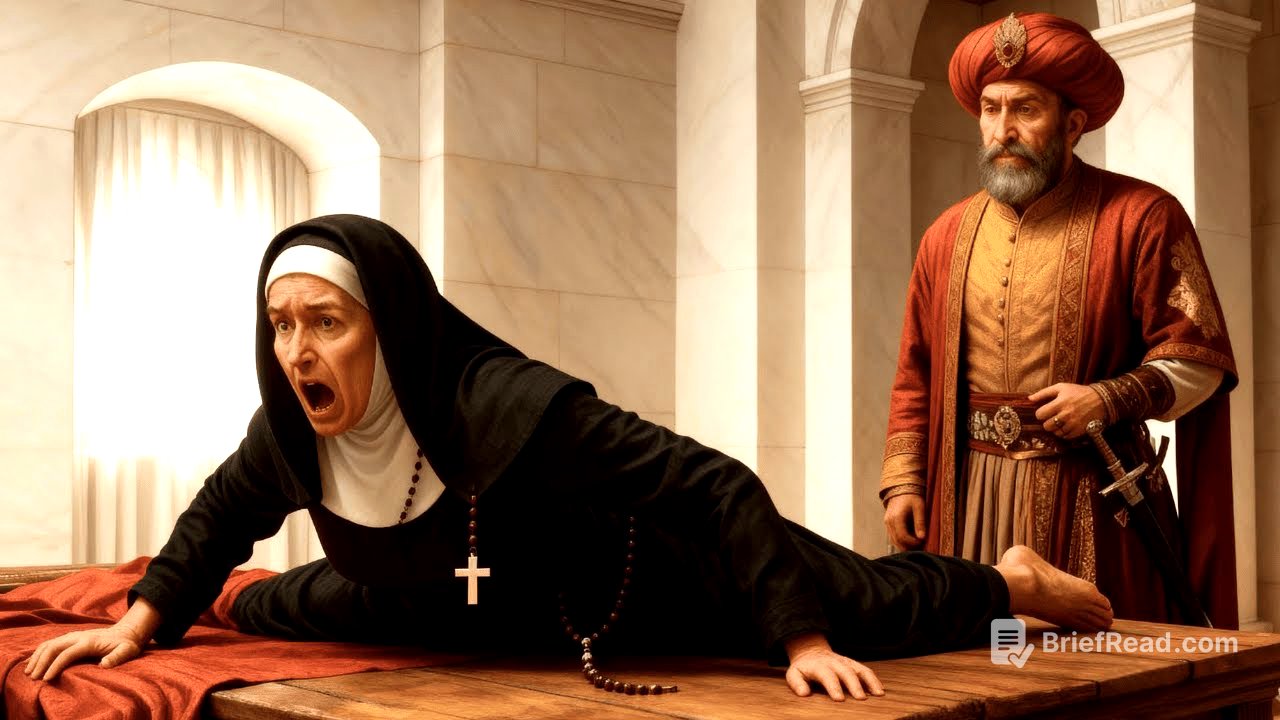TLDR;
This video uncovers the forgotten story of the nuns of St. Catherine's convent and their resistance against the Ottoman Empire's strategy of erasure. After the fall of Constantinople, Sultan Mehmed II aimed to eliminate Christian identity by offering conversion, and if refused, erasing their existence. The nuns, faced with this choice, chose faith and were subjected to psychological and physical trials. Despite enduring hardship, torture, and enslavement, they maintained their faith in secret, leaving behind a hidden chapel with carved crosses as a testament to their resilience. The video highlights the power of memory and faith against imperial efforts to erase identity.
- The Ottoman Empire sought to erase conquered people's identities rather than just conquer land.
- The nuns of St. Catherine's convent resisted conversion and faced psychological and physical trials.
- Despite hardship and enslavement, they maintained their faith in secret, leaving behind a hidden chapel as a testament to their resilience.
The Fall of Constantinople and Ottoman Strategy of Erasure [2:05]
In 1453, Constantinople fell to the Ottoman Empire, marking a significant turning point. Sultan Mehmed II understood that defeating a people involved erasing their identity, not just killing them. He aimed to dismantle any defiance from the conquered Byzantine world, viewing churches, monasteries, and religious figures as symbols of resistance. The Sultan decided to eliminate those who refused to convert, not through massacres that create martyrs, but through erasure, a strategy tested across the empire in Greek, Serbian, and Armenian religious sites.
The Convent of St. Catherine: A Test Case [4:18]
In 1470, the convent of St. Catherine in Thessaly became a test case for the Ottoman strategy of erasure. The nuns, including Abbess Sister Elani, Sister Magdalena, and Sister Theodoris, were devoted to a life of silence and prayer. When the Ottoman army arrived, they offered the nuns a choice: convert and be protected, or face the consequences of rebellion. Sister Elani refused, stating they had already given their lives to a king. Hassan Pasha, the officer in charge, responded with a chilling smile, knowing the Ottomans had perfected breaking people without killing them.
Psychological Warfare and the Journey to Constantinople [8:02]
The nuns were locked in their chapel without food or water, but their faith and discipline allowed them to endure. Hassan Pasha then offered them new lives and protection if they converted, or a journey to Constantinople to plead their case, knowing the weak would not survive the journey. The nuns chose to walk. During the journey, they faced exhaustion and death, but their silence was not of defeat, but of resolve. Sister Elani was taken to Hassan Pasha's tent and returned broken, but still praying silently.
Enslavement and the Secret Chapel [15:03]
At the port of Volos, the remaining 18 nuns were loaded onto a galley bound for Constantinople. They were chained and listed as "religious captives" destined for domestic service and conversion. Arriving in Constantinople, they were taken to a secret room beneath Topkapi Palace, where they created a hidden chapel. They carved crosses into the stone walls and recited psalms from memory. Sister Magdalena became their voice, and they shared memories as prayers.
Discovery and Legacy [20:42]
In 2011, archaeologists discovered the hidden chapel, finding crosses and the Latin phrase "Lux in tenebris lucet" (The light shines in the darkness). The crosses stopped halfway through the wall, and Ottoman records mentioned a cleansing of palace staff in 1482, after which the nuns vanished. Despite their disappearance, their chapel remained, and stories persisted of women singing in Latin in the palace halls. The nuns' act of carving prayers into stone demonstrated that faith could survive where empires could not. Their story highlights the power of memory and resistance against erasure.









